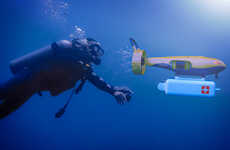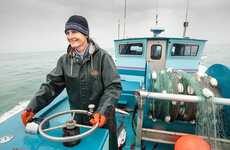
This Acoustic Monitoring Buoy Studies Endangered Whale Behavior
Rahul Kalvapalle — June 29, 2016 — Tech
A group of marine scientists and researchers working out of the Wildlife Conservation Society's New York Aquarium and the Woods Hole Oceanographic Institution have developed an exceptionally high-tech acoustic monitoring buoy that is designed to make it possible for them to stay on top of, study and ultimately protect a wide variety of species of endangered whales found in and around the New York Bight.
This acoustic monitoring buoy is connected to the ocean floor by virtue of stretch hoses. It is equipped with an acoustic instrument that can record and analyze soudns made by whales. The whale sounds are processed and then conveyed to a computer, which scientists use to develop a broader understanding of whale movements in the area.
The project is a great example of innovative use of existing technology to study and protect animal species in a non-invasive and respectful manner.
This acoustic monitoring buoy is connected to the ocean floor by virtue of stretch hoses. It is equipped with an acoustic instrument that can record and analyze soudns made by whales. The whale sounds are processed and then conveyed to a computer, which scientists use to develop a broader understanding of whale movements in the area.
The project is a great example of innovative use of existing technology to study and protect animal species in a non-invasive and respectful manner.
Trend Themes
1. Acoustic Monitoring - Opportunity to develop and improve acoustic monitoring systems for studying and protecting wildlife.
2. Endangered Species Protection - Opportunity to create innovative solutions and technologies to monitor and protect endangered species.
3. Marine Research and Conservation - Opportunity to advance research and conservation efforts in marine ecosystems through technology-driven solutions.
Industry Implications
1. Wildlife Conservation - Disruptive innovation opportunities in developing advanced monitoring tools for studying endangered wildlife.
2. Oceanography - Opportunity to create more efficient and effective tools for studying marine ecosystems and protecting endangered species.
3. Environmental Technology - Disruptive innovation opportunities in developing technology-driven solutions for environmental monitoring and conservation.
0.7
Score
Popularity
Activity
Freshness















